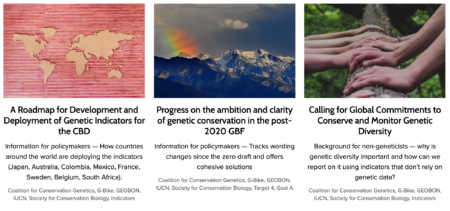Well, who isn’t right? Anyway, point is, the Coalition for Conservation Genetics has you covered with a dedicated website of resources in support of the CBD’s COP15. Extremely useful.

Agricultural Biodiversity Weblog
Agrobiodiversity is crops, livestock, foodways, microbes, pollinators, wild relatives …
Well, who isn’t right? Anyway, point is, the Coalition for Conservation Genetics has you covered with a dedicated website of resources in support of the CBD’s COP15. Extremely useful.
